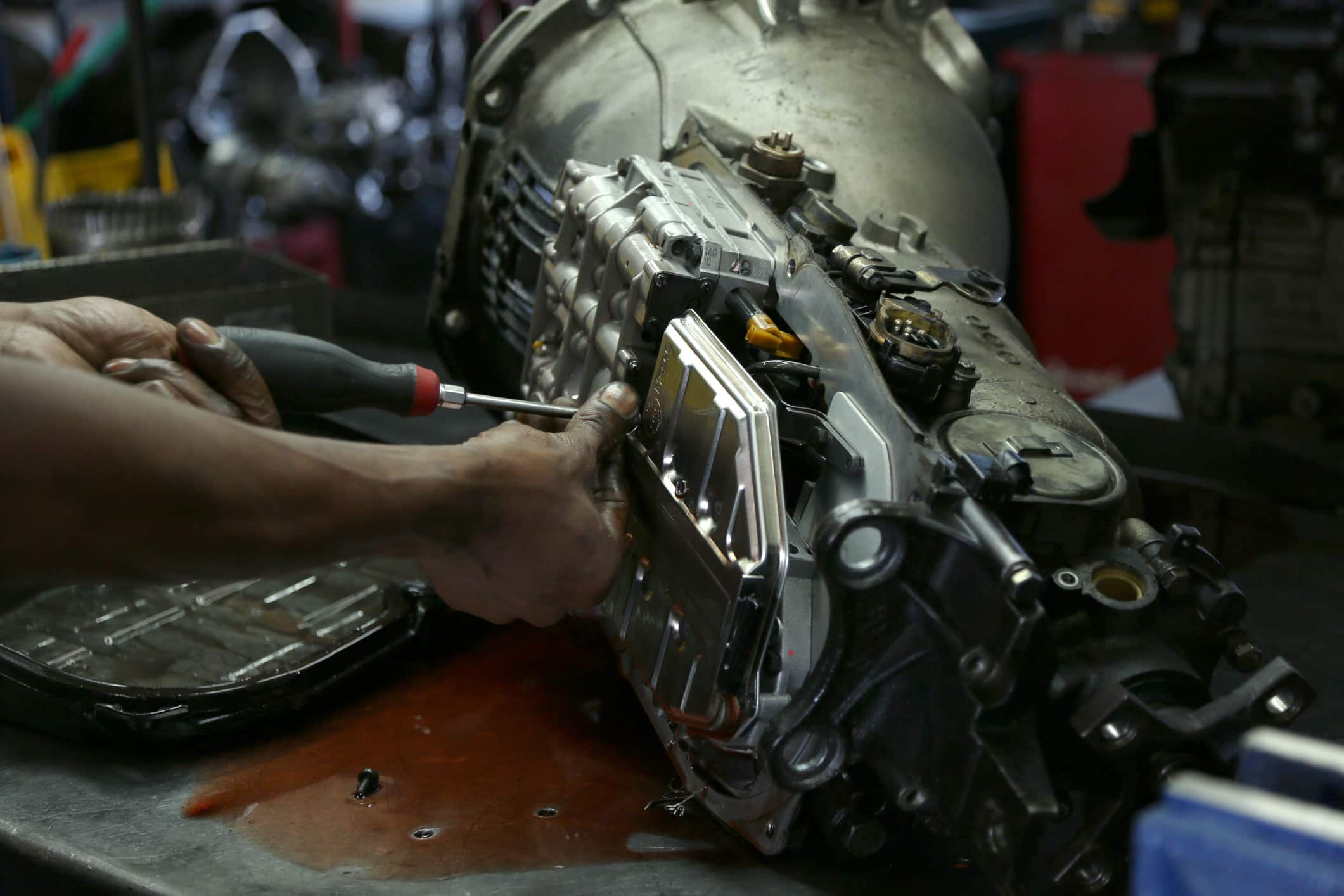
The 4R70W is a revised version of the famous Ford’s long-running 4-speed AOD (automatic overdrive) transmission that appeared in the ’80s. Experts believe a robust performance transmission adds more power to vehicles like the 4th generation Ford Mustang. In addition, it was a much-needed answer to the fuel efficiency issues that plagued the United States during the 1973 oil embargo crisis. General Motors and Chrysler saw the remarkable success of Ford’s 4R70W performance and followed almost immediately with the unique and respective versions. The nomenclature of the 4R70W breaks down this way:
- 4: Four forward speeds
- R: Rear-wheel drive
- 70: Torque rating x 10 (holds up to 700 lb-ft)
- W: Wide-ratio
You need to know the fundamentals of the 4R70W performance transmission.
Overview of the 4R70W Performance Transmission
As mentioned earlier, the 4R70W transmission is a significantly enhanced AOD with a wide gear ratio and rear-wheel overdrive. In addition, the 4R70W transmission’s first and second-gear ratios are higher. This has given rise to several benefits in vehicles mounted with this high-performance transmission. Drivers of the 4R70W performance transmission will enjoy better mechanical advantage, lower fuel consumption, and even better take-off acceleration. The strength of the gearset is also enhanced. The 4R70W features a ‘wide ratio’ gear set. In 1998, the intermediate one-way clutch was replaced with a mechanical diode.
4R70W Specs and Ratios
The 4R70W transmission’s case material is aluminum and features a Motorcraft FT 105 transmission filter. It has a maximum torque input of approximately 516 lb-ft. The 4R70W transmission’s gear ratios are as follows:
- First gear: 2.84:1
- Second gear: 1.55:1
- Third gear: 1.00:1
- Fourth gear (overdrive): 0.70:1
- Reverse: 2.32:1
The automatic overdrive electronic control transmission (AODE) was launched in 1991. This particular transmission is different from the AOD in several ways. This includes:
- Computer controls
- Torque controller
- Front pump assembly
- Single input shaft
- New valve body
The following are the respective gear ratios of the AODE:
- First gear: 2.40:1
- Second gear: 1.47:1
- Third gear: 1:2
- Fourth gear: 0.67:1
As you can see, their gear ratios are significantly different when compared side by side. Furthermore, note that valve bodies and cases of the 4R70W, AOD, and AODE are also different. This is why it is practically impossible to switch the valve bodies of these units, stipulating specificity. However, it is possible to take the gear train of the AOD and shove it into an AODE and experienced zero issues.
4R70W Facts
The ’70s birthed a slew of fuel-efficient vehicles, but the manufacturers had to sacrifice some performance and speed features exhibited by the older models. At the time, driving fuel-efficient cars was economically and environmentally friendly, making it possible to cover many more miles but with less fuel. Therefore, when oil prices rose by 400 percent, it became crucial to manufacturing fuel-efficient automobiles. Ford rose to the occasion in 1980 by creating the 4-speed AOD. This transmission had several features found in old designs, despite its newness. Nevertheless, it was the perfect replacement for many older transmissions created by Ford, including the FMX, C4, and C5. The AOD was similar to the 3-speed FMX automatics. These transmissions had a few components in common, including the Ravigneaux gear train, etc.
4R70W Pros and Cons
While the 4R70W may be a performance transmission, but it is not without issues. For instance, here are some pros and cons of the 4R70W transmission.
Pros
The 4R70W transmission comes with a significantly boosted overdrive band, including the following:
- Improved pinpoint precision control;
- Solid input shaft;
- Enhanced front pump.
Another significant benefit of the 4R70W transmission is its remarkable compatibility with most Ford automobiles with minimal work or modification. Moreover, this transmission easily fits several older vehicles, furnishing them with magnificent performance and efficiency.
Cons
When you overload the 4R70W transmission, you’re courting problems, as torque and power have a pronounced limit. Exceeding these limits can cause many various transmission problems. Other issues plaguing the 4R70W transmission include:
- Delay in lock-up;
- Intermediate clutch failures;
- Rough 2-3 shifts;
- Significant loss of forward gears and 4th gear;
- Considerable shudder in reverse or delay in reverse;
- Pump noise and leakage of the front seal;
- Significant loss of 2nd and 3rd gears.
Every automatic transmission worth its salt requires consistent maintenance. The 4R70 transmission is included. Maintaining this robust transmission regularly guarantees its longevity. This is why it is highly recommended that a certified expert looks into this robust automatic transmission during installation. If all these issues are eliminated, it will go a long way in boosting the overall reliability of your 4R70W performance transmission while providing the much-needed power boost.
Identifying the 4R70W Transmission
Many need to learn how to quickly identify the 4R70W or know whether or not they have one. However, you can identify the 4R70W transmission by looking at the following:
- Electric plug and cable. Both 4R70W and AOD transmissions come with a plug on their rear housing on the driver’s side. The electronic control cable plugs right into this particular spot in the unit. This differentiates the 4R70W and AODE transmissions from the older AOD units.
- Lightweight components. Compared to their predecessors, 4R70W and AODE transmissions come with an aluminum front pump against the cast iron that the AOD has. The AODE and 4R70W transmissions are also lighter due to their stamped steel clutch packs – which are lighter than the cast steel of the AOD.
These are just a few identifiable aspects that differentiate the 4R70W transmission from its older counterparts.
4R70W Performance Key Takeaways
The 4R70W performance transmission is one of the most outstanding stock transmissions on the market, guaranteed to perform even better in vehicles like the 4th generation Ford Mustang. The 4R70W is best for performance driving or drag racing enthusiasts, and good speed is 100 percent guaranteed.








